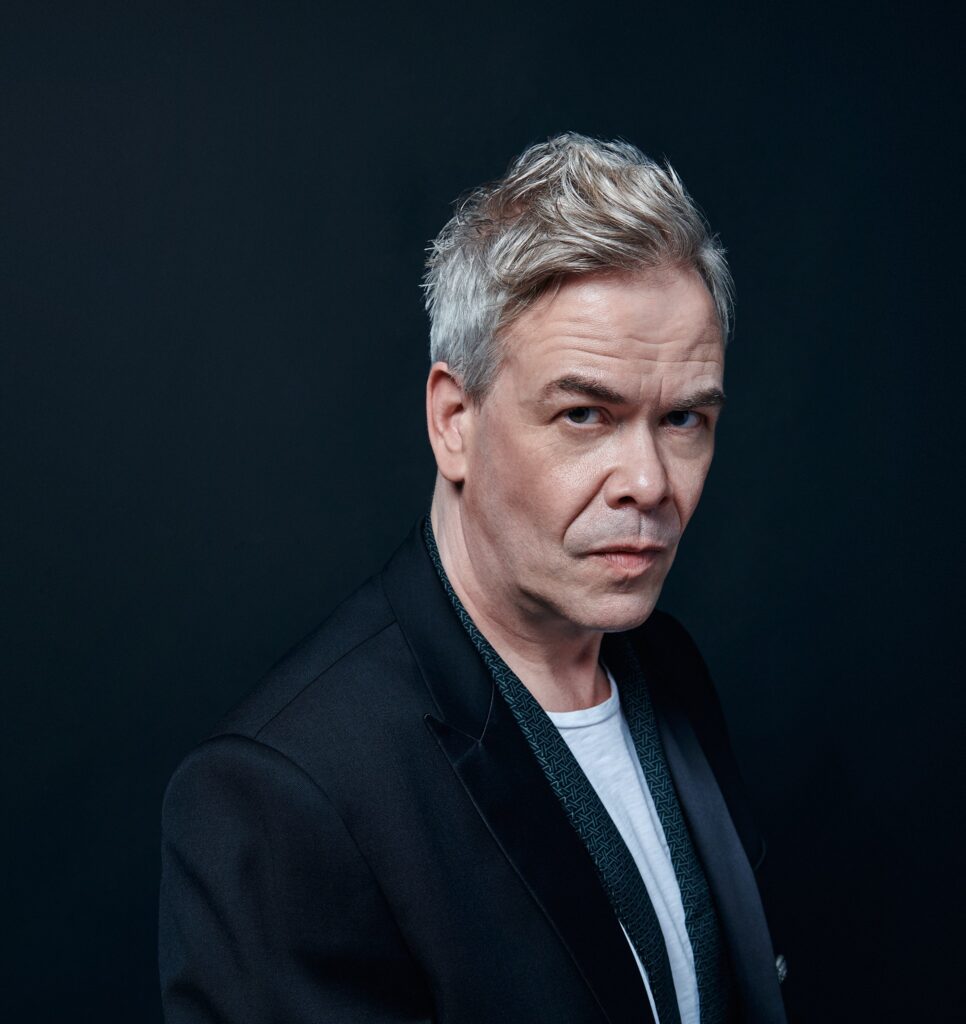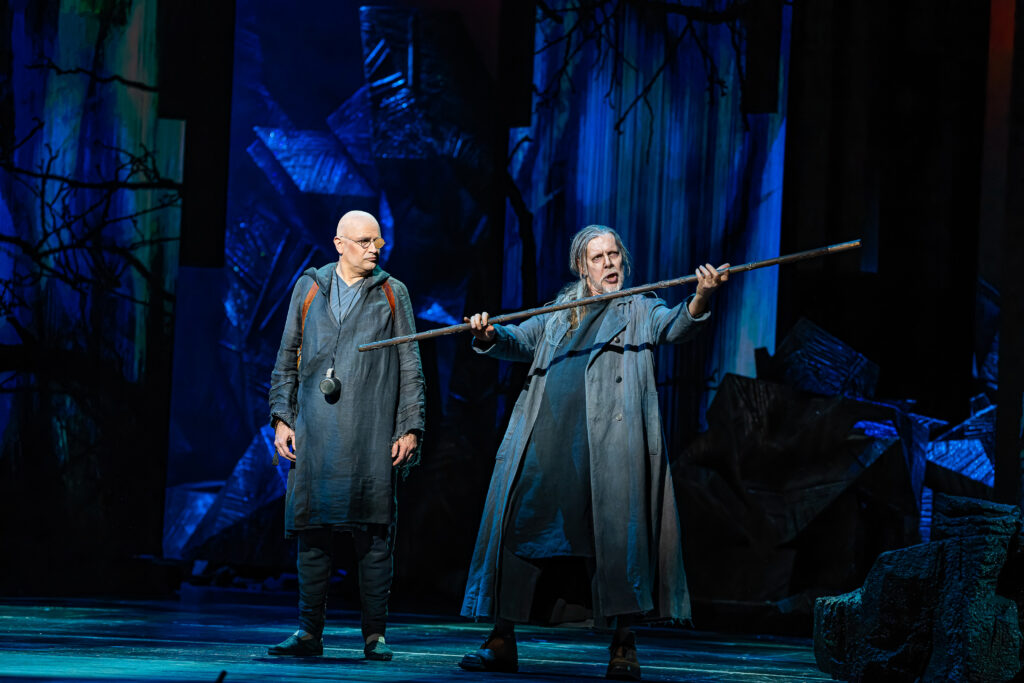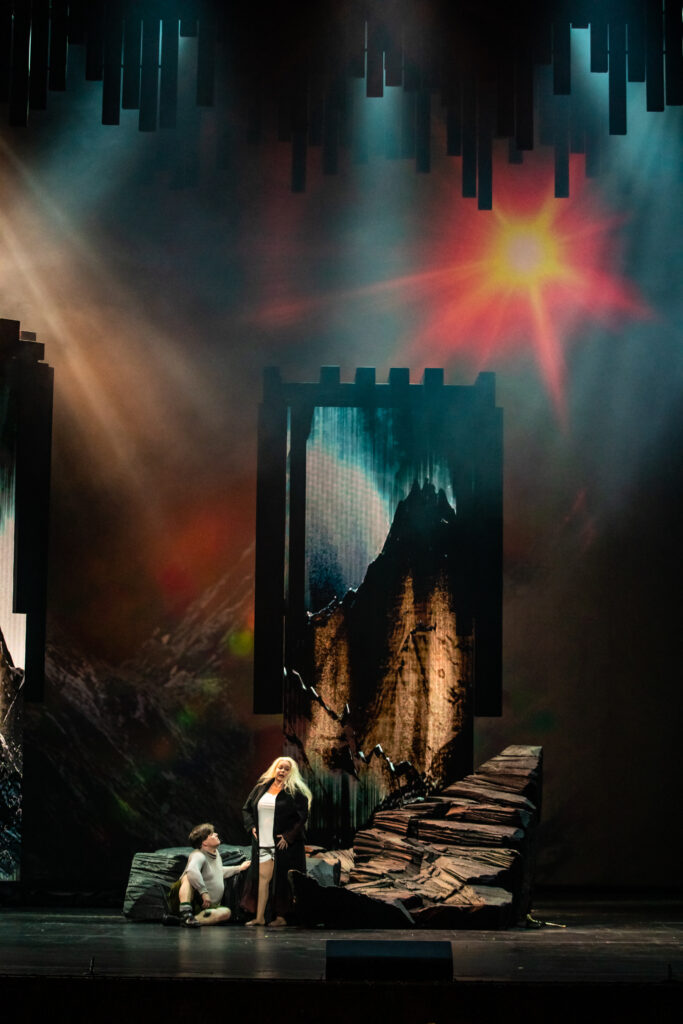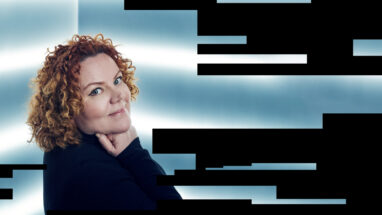

”One of most important constructions in the history of the arts”
The Ring tetralogy of the Finnish National Opera continues with the premiere of the third part, Siegfried, in March 2023. Chief Conductor Hannu Lintu’s shares his thoughts about the Ring.
What exactly makes Der Ring des Nibelungen such as unique tetralogy?

I can think of very few works of art where the scale and the material would be as coherently balanced as in the Ring.
Das Rheingold begins with a single voice, which is followed by the leitmotif associated with Nature. New themes are introduced seamlessly as the story unfolds, creating a network of motifs that is as vivid and alive as a kaleidoscope. This results in a tapestry of thoughts, ideas, and historic and spiritual layers. When the tetralogy comes to an end, the themes and motifs have fulfilled their musical purpose.
While a prolonged duration is typically not a benefit in artistic creations, the rich tapestry of the Ring maintains its strength across not just one, but four operas. Despite the duration and repetition, it sustains an incessant and unremitting momentum. Der Ring des Nibelungen is both logical and comprehensive, and it remains one of the most important constructions in the history of the arts.”
The logic of Wagner’s work relies heavily on the musical themes associated with characters, places, items, and events. Do listeners need to have prior knowledge of these themes to navigate his intricate web of leitmotifs?
Among the leitmotifs used, some are simple and direct, such as Notung or Siegfried, while others are more complex and abstract, like Rest or Suspicion. The motifs resembling fanfares are easy to identify, but others have more nuanced meta layers that work on a subconscious level.
The leitmotifs of the Ring were already catalogued during Wagner’s lifetime, although he was never particularly enthusiastic about them himself. However, these motifs must have guided his thoughts while composing – it’s hard to imagine such a complex construction achieved otherwise. Wagner assumed that the audience would eventually recognise the leitmotifs during performances. But if listeners focus too much on identifying these motifs, they might miss the opportunity to experience the all-encompassing flow of the Ring.
Wagner’s most successful use of the leitmotifs is when a character in the opera is only beginning to form a certain idea. He dives deep into the character’s subconscious and reveals something to the listener that even the character may not have realised yet. In a sense, the listener is one step ahead of the stage. Though these gestures are often very subtle and Wagner didn’t mean them to be consciously noticed, they are still highly effective.
Perhaps the best way to listen to the Ring is to sit back and let the themes get into your subconscious. By approaching the performance this way, you can immerse yourself in its flow instead of constantly searching for leitmotifs.

Siegfried, photo Ralph Larmann
After completing the second act of Siegfried, Wagner took a 12-year break from the Ring. During this time, he composed two extensive and totally different operas: Tristan und Isolde and Die Meistersinger von Nürnberg. Can you hear a stylistic shift in Siegfried as a result of this interruption?
Yes, you can. Of course, Wagner’s music had changed since the first two acts of Siegfried, because composers have a continuous need to evolve. Even Dmitri Shostakovich, who is said to have called Wagner ”an evil genius” has described the end of Act I as brilliant.
However, something groundbreaking happened during the 12-year break. As soon as the orchestral interlude begins, you notice a shift in the sound. While the themes remain the same, they are handled differently, and the musical continuum reaches another level altogether.
Though Wagner set his composition aside for a long time, he had no trouble picking up where he left off. His melodies, however, became longer and more undulating, and the music featured elements of expressive anguish, contrary to the previous leifmotifs resembling fanfares. The later score has more emotion, wisdom, and substance.
In Act III, we hear echoes of both operas that Wagner composed during the 12-year break. The encounter between the Wanderer and Erda is reminiscent of The Mastersingers of Nürnberg, while Siegfried’s character before waking up Brünnhilde evokes Tristan und Isolde. The influence of Tristan is particularly evident in the duets. In Die Walküre, the duet between Siegfried and Sieglinde still follows a classical form, advancing from one number to another, but the duet between Siegfried and Brünnhilde is more like a continuation of Act II of Tristan. The melody is unbroken, no longer episodic.
Conductors must often correct composers’ scores, for example to safeguard the balance between the orchestra and the singers. Was this necessary with the Ring?

While The Flying Dutchman, for example, still needed corrections, Ring is clearly the work of a capable and experienced composer. Yes, there are some technically challenging parts, but everything is playable.
On one hand Wagner wants extremely powerful eruptions from the orchestra, while on the other hand he seeks moments of frailty. In the end, making these extremes happen is down to the conductor.
Fortunately, the orchestral tapestry often has ”a window” that allows the singers’ voices to be heard. Wotan’s scenes are particularly difficult in terms of balance, as the baritone’s middle vocal range can get lost within the chord structure. Thankfully we can still hear everything that needs to be heard.
Qualities of chamber music can often be detected in the structure, too. Wagner has a huge orchestra at his disposal, but he only employs its entire machinery in a few dramatic scenes. The size of the orchestra allowed Wagner to use every instrument combination and colour possible.
Wagner composed Der Ring des Nibelungen for the Bayreuth Festspielhaus, where the orchestra pit is located underneath the stage. This automatically ensures balance even when the orchestra plays at its full expressive power. What can be played fortissimo in Bayreuth must be toned down in an open orchestra pit. It’s still important, however, that the orchestra has a more significant role than just providing a tapestry.
We also have to remember that the orchestra of Wagner’s time was not as loud as today. The decibel levels were lower, the string instruments still had sheep gut strings, and the winds had a softer sound.
Is conducting Der Ring des Nibelungen the dream of every opera conductor?
I’m sure it’s not only so for opera conductors: even more symphonically oriented colleagues of mine love conducting the Ring. Attraction to large works seems to be in the DNA of us conductors. It appears to be like the mania that drives mountaineers, and the Ring is definitely one of the highest summits.
Ring is all about the art of interludes. Siegfried’s score has so many details to admire, but what’s most crucial is to plan how the longer episodes interconnect, how the nature of the leitmotifs comes out in the best possible way, and how the dialogue is conducted so that the tempo supports the libretto. I would assume that musicians also admire the Ring because it’s a lifelong challenge, for both the performers and the audience. Every new performance brings out more layers and detail. This is a characteristic that only very few composers and compositions have.
Interview by Juhani Koivisto



